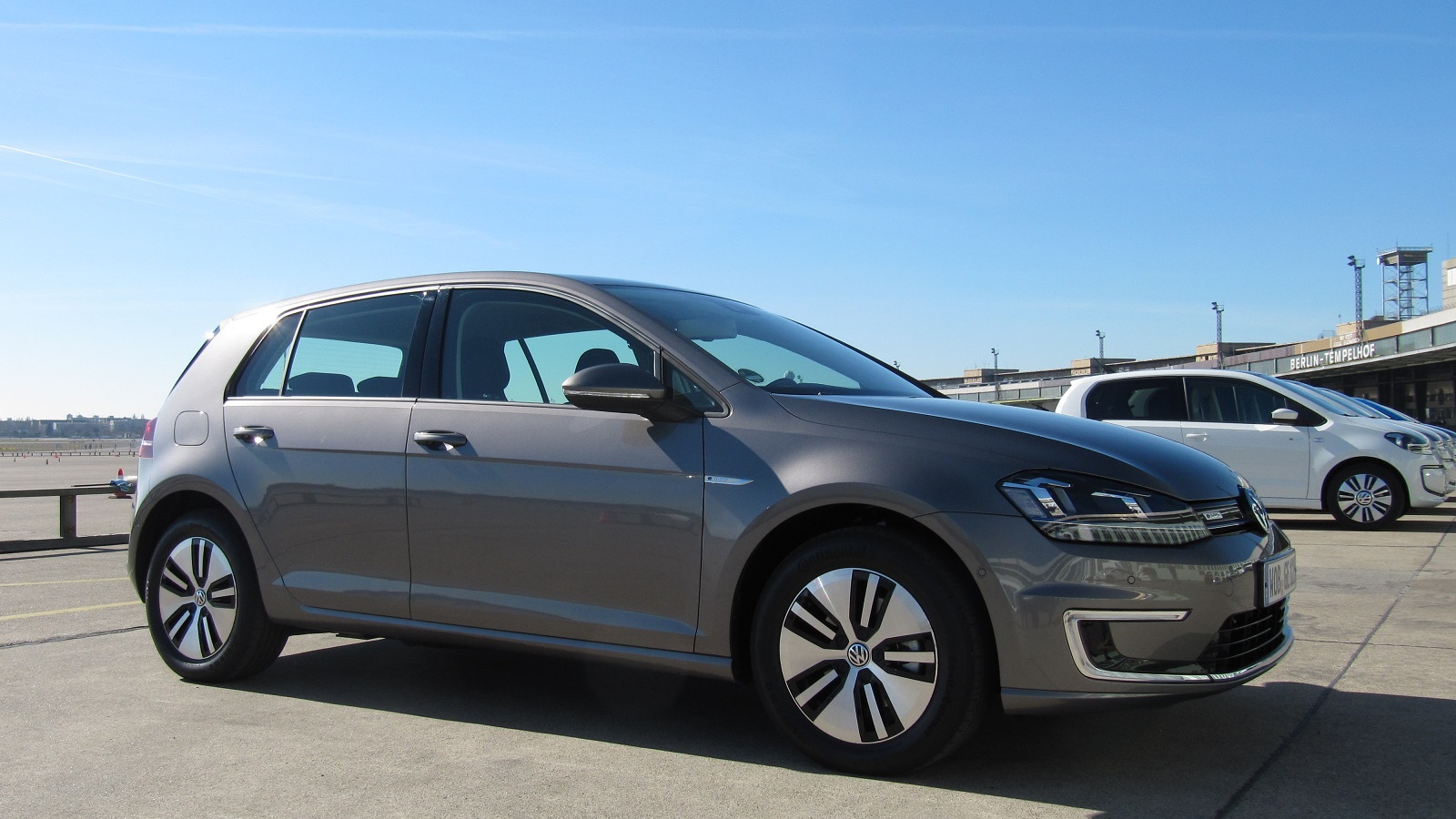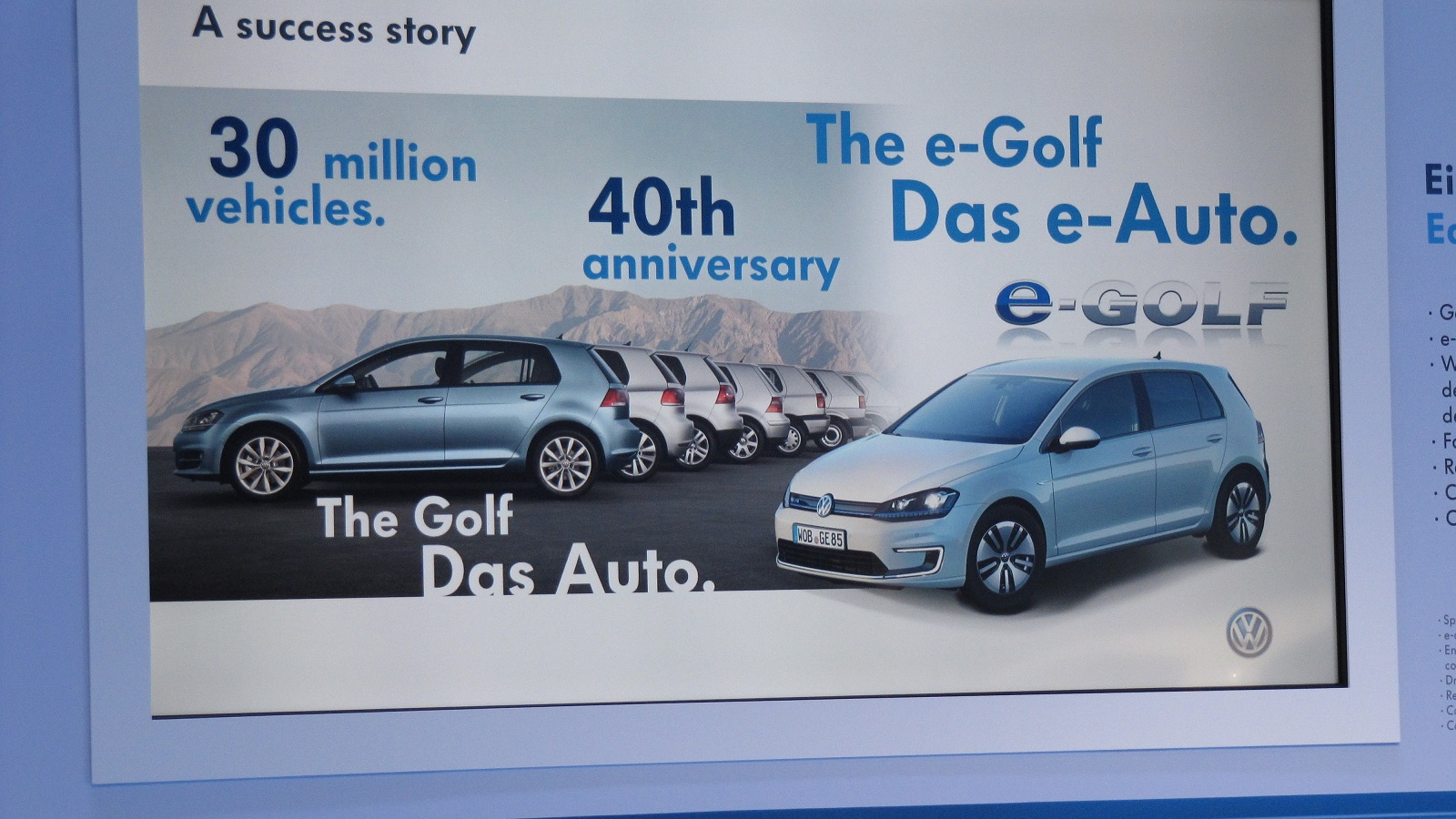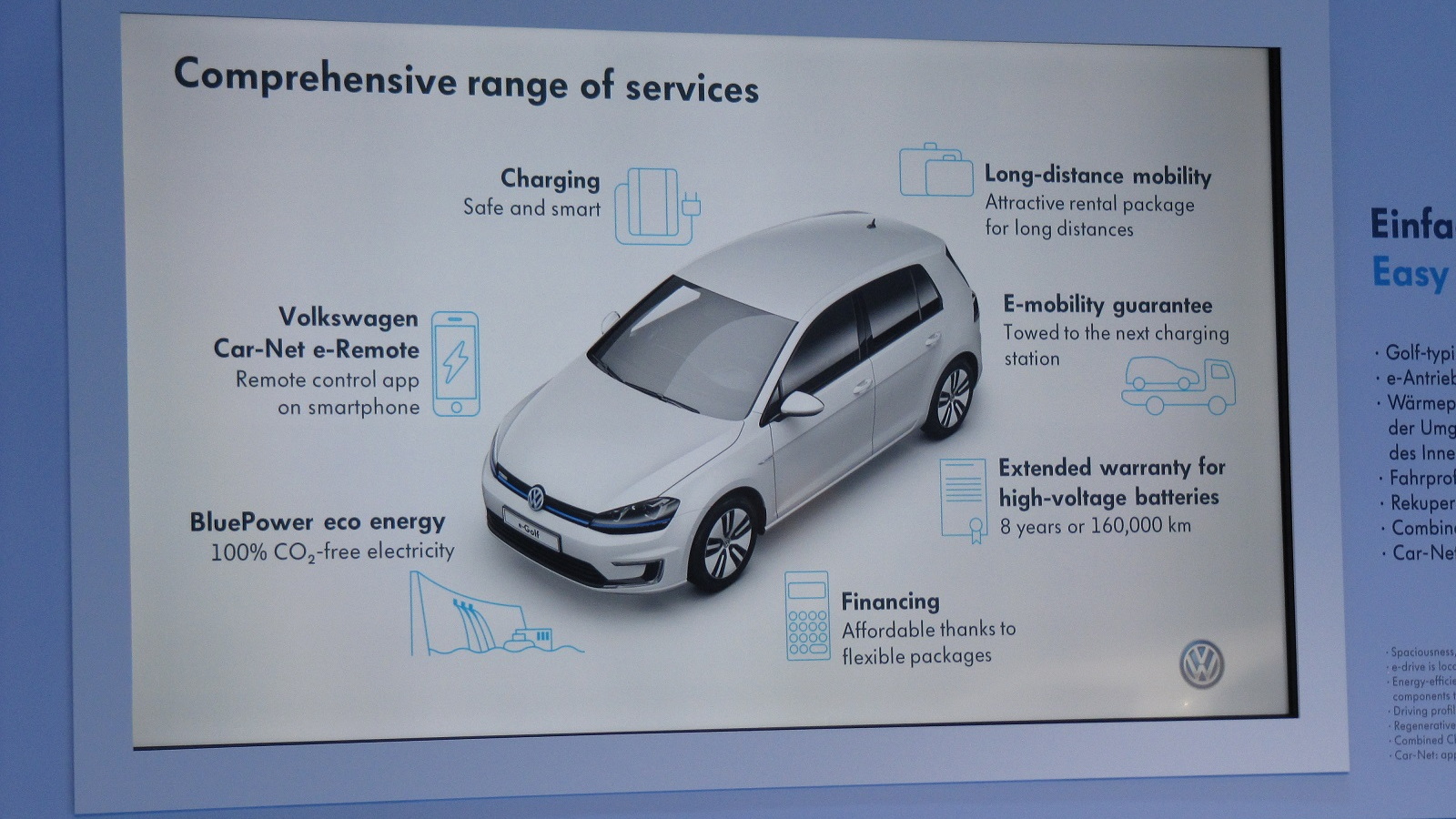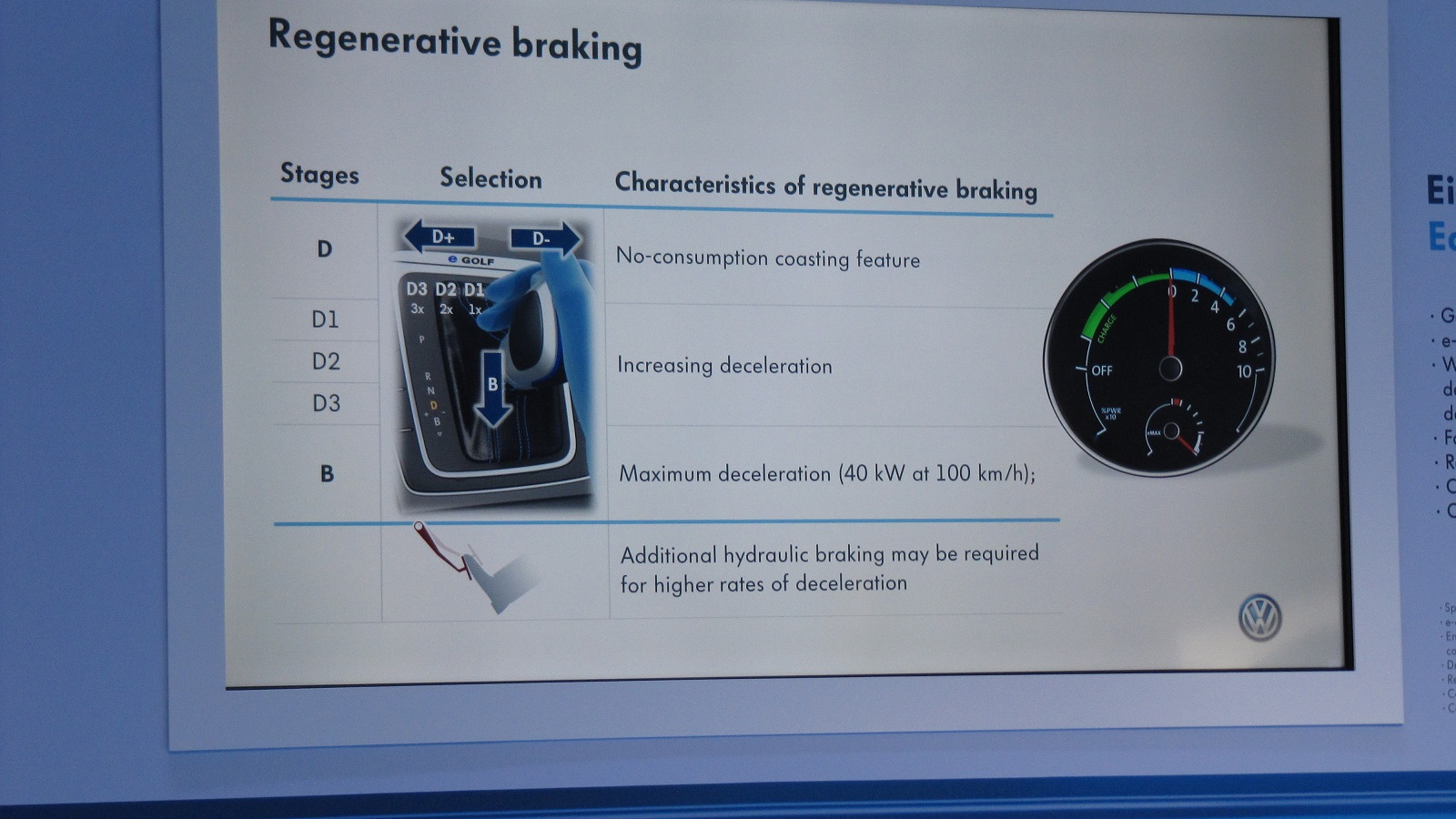The 2015 Volkswagen e-Golf is the German maker's first production electric car to be offered for sale in the U.S.
On sale late this year, it adds a plug-in electric powertrain option to the all-new seventh generation of the classic Golf five-door hatchback, now celebrating its 40th birthday.

Volkswagen e-Golf (European model) test drive, Berlin, March 2014
While the new Golf has been on sale in Europe since late 2012, it will arrive in the U.S. market this summer. Pilot production of cars for North America began earlier this year at the company's facility in Puebla, Mexico.
ALSO SEE: How Lithium-Ion Batteries Age: Scientists Offer Insight
Unlike the gasoline and diesel models of the 2015 VW Golf to be sold in North America, however, all electric Golfs sold in the States will be assembled in Volkswagen's home factory in Wolfsburg, Germany.
Last week, we spent almost two hours driving a European-spec 2015 e-Golf for more than 20 miles (33 km) around Berlin, part of the Volkswagen Group's first major "e-Mobility" event at the former Tempelhof Airport.
The bulk of our driving was in dense stop-and-go traffic and less crowded urban neighborhoods broken up by frequent stop lights. There was one short stretch of highway, but generally speeds stayed at or below 40 mph.
Overall, our impressions are favorable.
The electric Volkswagen Golf is exactly what VW intended it to be: the first production model in the Golf line to use a battery-electric powertrain, but otherwise every bit a Golf.

Volkswagen e-Golf (European model) test drive, Berlin, March 2014
'Golf first'
No unusual Leaf styling here; you have to look closely even to see that it's different from any new other 2015 VW Golf. Aside from wheels, badges, LED lights, and a few trim items, there are no hints to the battery-electric drivetrain that lurks under the sheetmetal.
And that's by design.
Volkswagen's new MQB "toolkit" of platform components was designed from the start to accommodate drivetrains that include gasoline, diesel, natural gas, electric power, and a gasoline plug-in hybrid--including fuel tanks and battery locations.
The electric traction motor, with a peak output of 85 kilowatts (114 horsepower), sits under the hood and powers the front wheels. Power electronics are also located there, and the charging port is on the right rear fender located under the standard fuel filler door.
DON'T MISS: Does Quick Charging Hurt Battery Life? Total Miles Are More Important
The e-Golf's 24.2-kilowatt-hour lithium-ion battery pack sits under the rear seats and between the rear wheels, with small "wings" under the two front seats. The total pack weight is 700 pounds (318 kg).
It is air-cooled, like that of the Nissan Leaf, rather than using liquid cooling as do packs from Ford, General Motors, Tesla, and others. (There was some confusion over this in the press materials; we confirmed it with the German battery engineers.)
And VW says there is no difference in luggage volume between the battery-electric Golf and a gasoline or diesel model.

Volkswagen e-Golf (European model) test drive, Berlin, March 2014
Quietest, calmest Golf
On the road, the e-Golf is essentially a brand-new Volkswagen Golf with the quietest powertrain of the several offered in the car.
The company stressed that its goal was to provide a car that was "a Golf first, and zero-emission second," and that's exactly what it has done.
Other goals included "suitable for families" and "sporty handling," and VW has largely achieved them.
The seventh-generation Golf has grown in size, interior volume, and equipment level, and 40 years after the model was first launched, it's matured: It's a quiet, capable, compact hatchback that's lost a bit of the cheeky, rollerskate appeal of the first generation.
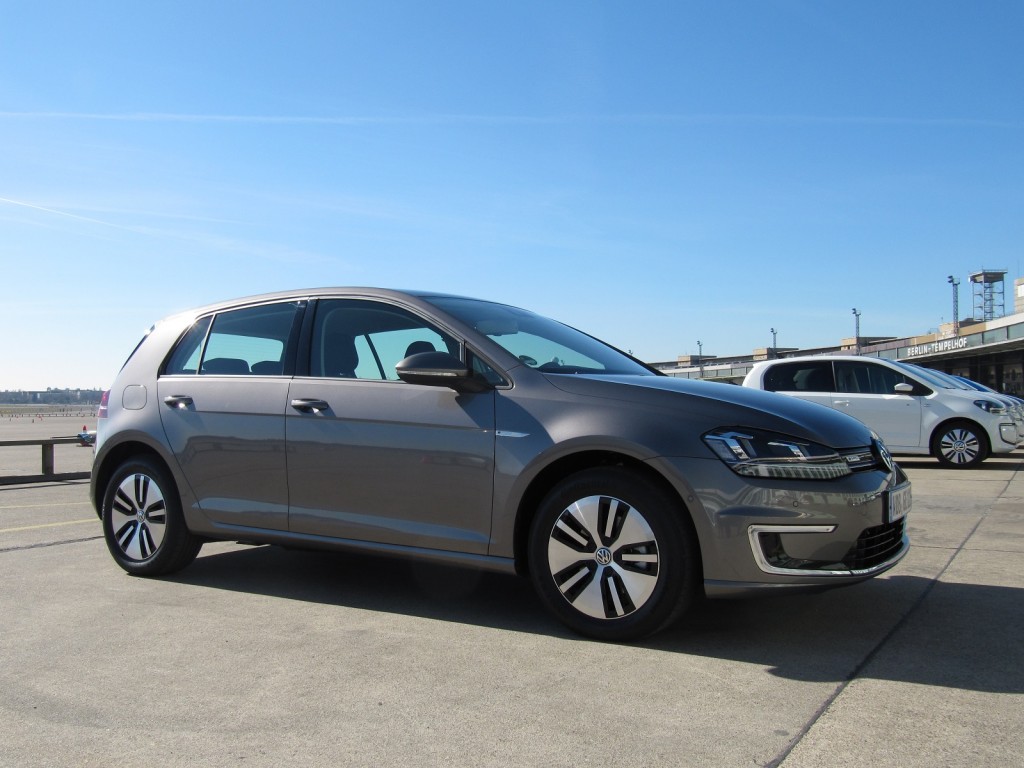
Volkswagen e-Golf (European model) test drive, Berlin, March 2014
That role now falls to the Volkswagen Up minicar, which also has an electric version that we drove and will review later on. (The VW e-Up, however, will not be sold in the States.)
The e-Golf's ride is firm, and like most electric cars, its weight is carried down low so it don't roll all that much in corners.
Acceleration is good off the line, although not lightning-fast by design. Quoted times from 0 to 36 mph (60 km/h) is 4.2 seconds, with a 0-to-62 mph (100 km/h) time of 10.4 seconds.
Those are hardly Tesla times, but they'll likely beat many of the different Golf variants on sale in Germany--not to mention providing a travel experience that's far quieter and significantly cheaper per mile (or kilometer)--and they should be acceptable in faster U.S. traffic.
Top speed is limited to roughly 90 mph (140 km/h).

Volkswagen e-Golf (European model) test drive, Berlin, March 2014
Variable regen, drive mode settings
Regenerative braking can be increased by three steps, from the standard "D" setting that behaves like a conventional automatic transmission (minus idle creep, we noted) up through D1, D2, and D3--which equals the "B" setting on the lever for maximum regenerative braking.
We found the settings well graduated and easy to use, though we'd have preferred steering-wheel paddles to pulling the lever left to increase the regen.
Still, we drove in the different settings and found that the "B" setting would almost provide one-pedal driving--if not as much so as in the BMW i3.
ALSO SEE: Even Small Towns See Demand For Electric-Car Charging
There are also three driving modes: Standard, Eco, and Eco+. The Eco setting limits top speed, reduces the ventilation output, reprofiles the acceleration, and slightly cuts maximum power from the motor (from 85 to 70 kW).
The Eco+ setting is more drastic: It turns off heat and air-conditioning, running a fan just enough to keep the windshield clear, and cuts motor output further to 55 kW. Top speed is limited to about 55 mph (90 km/h) and accelerator response is flat and linear.
No whine
Impressively, we heard no motor or power electronics whine at all from the e-Golf during our drive, an absence we've found in only a handful of the 16 plug-in cars offered for sale this year in the U.S.
Our e-Golf's energy consumption rate was shown by the vehicle computer as 14 kWh--slightly more than the average consumption rate of 12.7 kWh per 100 km.

Volkswagen e-Golf (European model) test drive, Berlin, March 2014
We think the "Golf first, electric car second" formula should find some success in the U.S., although as always, volumes depend on both the manufacturer's intentions and its ability to work with dealers and encourage them to take on an addition to the lineup many will perceive as new, foreign, and confusing.
VW's U.S. representatives said the company hopes to create an electric-car ownership experience second to none.
They hinted that the company will offer a suite of services--possibly including loaner cars for longer trips, roadside assistance, carbon offsets for electricity used to recharge the e-Golf, and other elements--that reflects best practices across all current plug-in offerings.
The electric Golf will go on sale this November or December in a limited number of launch markets where plug-in electric cars have already established themselves, including California and several Northeast states.
Final specifications, sale and lease pricing, and other details will be announced closer to the on-sale date.
Volkswagen provided airfare, lodging, and meals to enable High Gear Media to bring you this first-person drive report.
_______________________________________________
